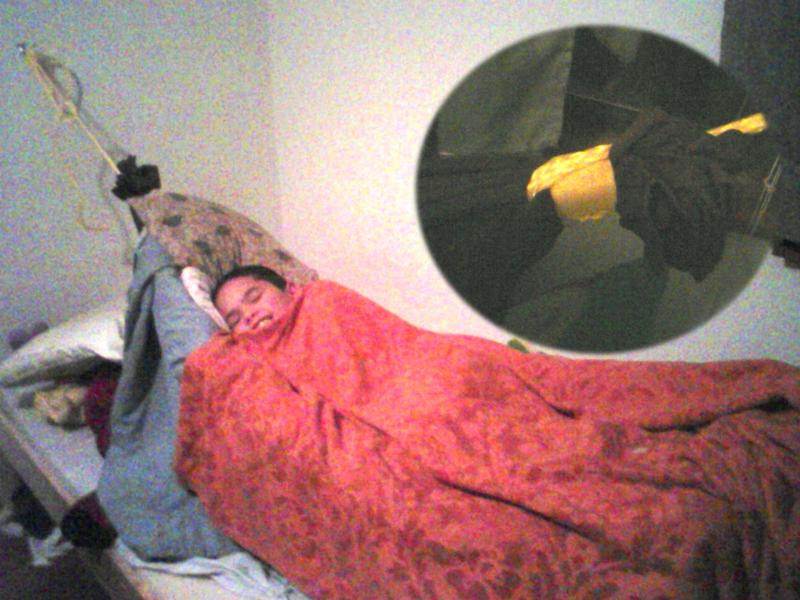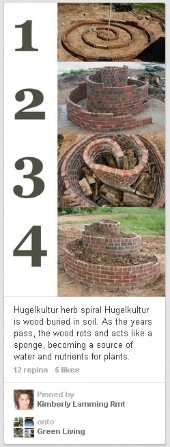




Daniel Worth wrote:
1. I've made a tarp that goes over the hammock. These systems are documented extensively on http://hammockforums.net
2. No gathered end hammocks don't use spreaders. It's what makes them so simple and cheap.
3. While one commercial manufacturer makes a double hammock, ENO(Eagle Nest Outfitters) I've heard that it isn't very comfortable to sleep in a hammock with two people. So, I would say they are so cheap and take up so little room you'd use two hammocks for two people.
I can make a standard backpacking hammock in about two hours including the time to sew the seams. For backpacking making the quilts and the tarp are much more difficult and time consuming.





See my project at http://500yearfarm.com
 1
1




 1
1




 total cost less than $20. The picture below shows Tim ready for to sleep and the detail of the gathered end. This was very quick to make... may 1/2hour because it is already hemmed. Because he is inside he doesn't need as much under as outside would, but we don't keep the room at 22C either so he needs something. Putting the quilt inside did work, but I really want to try pinning something on the outside as I think it will make it much easier for him to get in and get comfortable. He thinks it is a great way to sleep ... we will see how it works in the long run. My other son wants to try as well.... so I have another table cloth waiting. I learned to wear gloves while tying... I have a blister in my finger from pulling cord tight
total cost less than $20. The picture below shows Tim ready for to sleep and the detail of the gathered end. This was very quick to make... may 1/2hour because it is already hemmed. Because he is inside he doesn't need as much under as outside would, but we don't keep the room at 22C either so he needs something. Putting the quilt inside did work, but I really want to try pinning something on the outside as I think it will make it much easier for him to get in and get comfortable. He thinks it is a great way to sleep ... we will see how it works in the long run. My other son wants to try as well.... so I have another table cloth waiting. I learned to wear gloves while tying... I have a blister in my finger from pulling cord tight  I am going to order a "double" hammock for my wife and I to try. I have heard from some that there are a lot of things not possible this way and from others that it is more fun. Only one way to find out.
I am going to order a "double" hammock for my wife and I to try. I have heard from some that there are a lot of things not possible this way and from others that it is more fun. Only one way to find out.

 1
1




Len Ovens wrote:A bit more on Hammocks:
 (we are experimenting after all)
(we are experimenting after all)

 I did a very loose stitch to hold it on. Here it is rehung:
I did a very loose stitch to hold it on. Here it is rehung:

 2
2




 6
6









Jocelyn Campbell wrote:Len, the hammock links are awesome resources for a variety of places we've talked about placing hammocks - perhaps even the shelves in the auditorium.
 1
1




"You must be the change you want to see in the world." "First they ignore you, then they laugh at you, then they fight you, then you win." --Mahatma Gandhi
"Preach the Gospel always, and if necessary, use words." --Francis of Assisi.
"Family farms work when the whole family works the farm." -- Adam Klaus




R Scott wrote:Hammocks are COLD on your back. That is what makes them awesome in the jungle, but really limits them in the cold unless you insulate.
I want to make something like this: http://duluthpack.com/outdoor-gear/camping-hiking-gear/bedrolls/kephart-log-cot.html
You could do it in organic cotton and wool blanket as the insulation pad. Or convert an organic cotton comforter into that setup (starting with a TALL twin would be about right). Or a sheepskin rug as your mattress pad.
Best deal I ever found on wool blankets were Italian military surplus. Awesome wool, once you got the mothballs out. No deals like that anymore.
 2
2




 1
1




Random Stuff I do/like: 2matoes

 2
2




QuickBooks set up and Bookkeeping for Small Businesses and Farms - jocelyncampbell.com
 1
1




Shenanigans of the sheep and wooly sort.. And many more.. https://www.instagram.com/girlwalkswithgoats/
Papa always says, "Don't go away angry... just go away."
 1
1




I generally ignore the government, they generally ignore me. (I ain't that important)
Walk lightly, our presence is known both by what we leave behind us and by that which we do not leave.
 1
1








Matthew Beckman wrote:Tony and Emily,
How does the hull bed feel? Kat and I are thinking of switching over to one. We saw this a month or so ago and almost bought one. We would like to hear your guys thoughts.
matt and kat










kadence blevins wrote:Is a wool mattress (organic material fabric and organic permie raised sheep wool) something that people would buy?
Or just in the case of the lab say i raised sheep and made wool mattresses?
QuickBooks set up and Bookkeeping for Small Businesses and Farms - jocelyncampbell.com
 2
2




Jocelyn Campbell wrote:
kadence blevins wrote:Is a wool mattress (organic material fabric and organic permie raised sheep wool) something that people would buy?
Or just in the case of the lab say i raised sheep and made wool mattresses?
I think so, yes. We looked at the local cotton/wool futons that others recommended, and the components were not listed as organic or raised sustainable/humane, so that was part of the reason the buckwheat hulls were chosen.
Paul really wants everything as least toxic or truly non-toxic as possibly. Sometimes that's very hard if not impossible to find.
 1
1




 4
4
















 7
7




 2
2















QuickBooks set up and Bookkeeping for Small Businesses and Farms - jocelyncampbell.com
 1
1








 2
2




 1
1




 1
1




Jay Hayes wrote:So, after writing my post yesterday I went ahead and ordered a layered felt mattress from shepherds dream yesterday. The folks were really easy to work with and seemed genuinely happy to help me out. The mattress is made to order so I will get it in 4-6 weeks, with free shipping! If anyone is curious about the product feel free to ask me and I'll share some info when I get it. I am wicked excited!
J
I make a Maple Syrup instructional movie! Check it out HERE
SKIP books, get 'em while they're hot!!! Skills to Inherit Property
See me in a movie building a massive wood staircase:Low Tech Lab Movie
 2
2




Living a life that requires no vacation.










QuickBooks set up and Bookkeeping for Small Businesses and Farms - jocelyncampbell.com




 3
3







Peasants slept on beds of straw, while Emperors slept on beds of hulls.
www.OpenYourEyesBedding.com
 4
4




 14
14
 1
1




''If I told you what it takes to reach the highest high, you'd laugh and say nothing's that simple'' Roger Daltry
 3
3




Thanks for the "blast from my past" Niall! It's been a long time since I've heard/seen the word "bairn" for child used, and it brought a smile to my face! My father was "off the boat" and my Grand father on the other side also, although not as far north as the word "bairn" is customary.Several years ago a shepherdess gave birth to a bairn with multiple allergies, a prime allergy being the toxic components of the crib mattress.
Visit Redhawk's soil series: https://permies.com/wiki/redhawk-soil
How permies.com works: https://permies.com/wiki/34193/permies-works-links-threads

|
Does this tiny ad smell okay to you?
The new purple deck of permaculture playing cards
https://www.kickstarter.com/projects/paulwheaton/garden-cards
|







